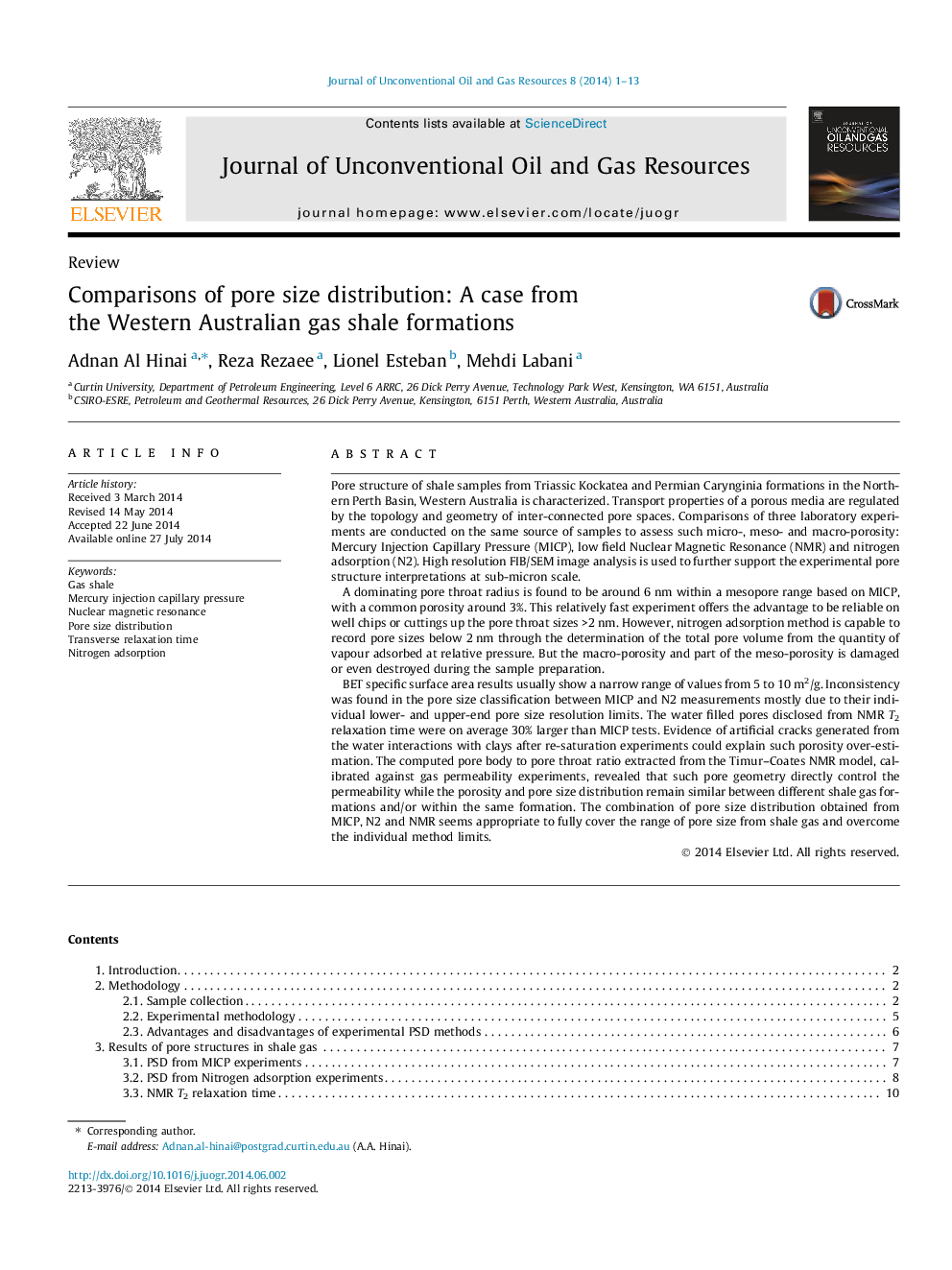| کد مقاله | کد نشریه | سال انتشار | مقاله انگلیسی | نسخه تمام متن |
|---|---|---|---|---|
| 1756722 | 1522954 | 2014 | 13 صفحه PDF | دانلود رایگان |
Pore structure of shale samples from Triassic Kockatea and Permian Carynginia formations in the Northern Perth Basin, Western Australia is characterized. Transport properties of a porous media are regulated by the topology and geometry of inter-connected pore spaces. Comparisons of three laboratory experiments are conducted on the same source of samples to assess such micro-, meso- and macro-porosity: Mercury Injection Capillary Pressure (MICP), low field Nuclear Magnetic Resonance (NMR) and nitrogen adsorption (N2). High resolution FIB/SEM image analysis is used to further support the experimental pore structure interpretations at sub-micron scale.A dominating pore throat radius is found to be around 6 nm within a mesopore range based on MICP, with a common porosity around 3%. This relatively fast experiment offers the advantage to be reliable on well chips or cuttings up the pore throat sizes >2 nm. However, nitrogen adsorption method is capable to record pore sizes below 2 nm through the determination of the total pore volume from the quantity of vapour adsorbed at relative pressure. But the macro-porosity and part of the meso-porosity is damaged or even destroyed during the sample preparation.BET specific surface area results usually show a narrow range of values from 5 to 10 m2/g. Inconsistency was found in the pore size classification between MICP and N2 measurements mostly due to their individual lower- and upper-end pore size resolution limits. The water filled pores disclosed from NMR T2 relaxation time were on average 30% larger than MICP tests. Evidence of artificial cracks generated from the water interactions with clays after re-saturation experiments could explain such porosity over-estimation. The computed pore body to pore throat ratio extracted from the Timur–Coates NMR model, calibrated against gas permeability experiments, revealed that such pore geometry directly control the permeability while the porosity and pore size distribution remain similar between different shale gas formations and/or within the same formation. The combination of pore size distribution obtained from MICP, N2 and NMR seems appropriate to fully cover the range of pore size from shale gas and overcome the individual method limits.
Journal: Journal of Unconventional Oil and Gas Resources - Volume 8, December 2014, Pages 1–13
